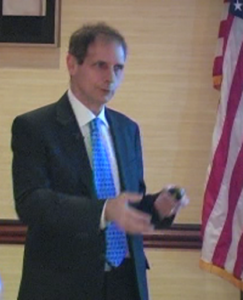Date: September 28, 2016
Topic: Writing a Forensic Report
Presenter: Mike Wakshull
Abstract:
A well-written report may lead to settling of a case in favor of your attorney client’s client. A poorly written report may result in dismissal of the forensic examiner’s opinion as being without merit. The format of the report may be determined by the venue for which the case is being litigated. As an example, in United States Federal Court, the report must meed requirements of Federal Rules of Evidence 26. In some jurisdictions the report must be an addendum to an affidavit of opinion. In other jurisdictions there is no set requirement for the format of a report.
This presentation will review requirements for a forensic report as demonstrated in FRE Rule 26 and ASTM Standard E620.11, Standard Practice for Reporting Opinions of Scientific or Technical Experts.
Bio:
Mike Wakshull is vice president of SAFE. He was chair of the 2014, 2015 and 2016 SAFE annua l conferences.
l conferences.
Mike Wakshull partners with clients in civil and criminal cases that require authentication of handwritten and computer generated documents. As a court-qualified document examiner he dissects the evidence, helping clients to learn the strength of their case. Wakshull applies his scientific and engineering training to examine questioned documents. Courts require a verifiable, scientific approach for expert witness testimony. His verifiable approach produces winning arguments.
Customer service and client communication are strong aspects of working with Q9 Consulting. Mike uses internet video technology to communicate with clients anywhere in the world.
He uses generally-accepted practices such as ASTM and SWGDOC standards. He has built a well-equipped laboratory and a large forensic reference library. As a university instructor and member of National Speakers Association, Wakshull is skilled at explaining complex evidence with clear exhibits, easy-to-understand language and descriptive pictures. His courtroom approach teaches and engages the trial participants—judge, jury and attorneys.
Mike is a frequent speaker at local and international forensics conferences.
